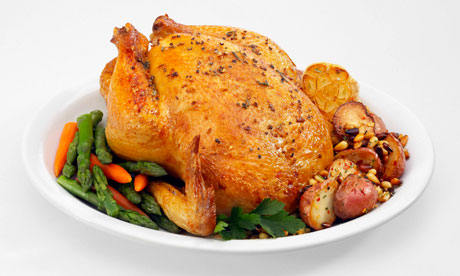 |
| /2012/02/hungry-bunny.html |
Instead of looking directly at sweets from the offset, I want to start this post with essentially nothing (in terms of what's edible), and build from there. Looking at food within Jane Eyre, there are two aspects: simply, the presence of food and the absence of food. For this reason, I will break the two apart and post them in two separate entries. Here, we are looking at the lack of food - things which aren't available to eat, and Jane's subsequent hunger. In addition to this, we will see how this hunger is not only literal, but also encompasses passionate feelings towards her employer, Mr Rochester, as her appetite does not always signify cravings for just a meal.
At Gateshead, staying with the Reed family as a young child, her aunt made it clear that Jane "ought to beg, and not eat the same meals we do" (9). From the outset, then, exclusion from eating casts her out from the family circle and initiates a relationship (albeit negative) between love, care and food.
This theme is dragged through to her time at Lowood School: Mr Brocklehurst, an ultimate figure of tyrannical power, withholds food from the girls in order to "mortify the flesh." However, mortifying the flesh is such an abstract statement that we cannot begin to understand his logic; "a mug of coffee and half a slice of brown bread" (60) most definitely does not constitute a substantial evening meal and it is clear that the lack of food is an offspring of his greed and non-compassion. The girls' poor diet is rounded off by perpetual bowls of porridge, often burnt. Jane comments that the portion sizes are "so small, how [she] wishes it had been doubled! (61)
At Lowood, the only form of "comfort food" (and emotional comfort) comes from Miss Temple. We can look at this in the next post.
 |
The next stage of Jane's life and eating habits is at Thornfield, where she settles as Governess for Adèle, a young French girl, being provided with food and money. As she has a stable and plentiful diet, this is where there comes a shift in the situations where she does not eat. The reasons for her hunger now stem from her emotional attachment to her employer, and lover, Mr Rochester. There are two significant events which are useful to draw upon and validate this argument:
- Jane first realises her feelings for Mr Rochester in Chapter 16 when she explains how "I was
beginning to feel a strange chill and
faintness at the heart. I was actually permitting myself to experience a
sickening sense of disappointment" at his leave (189) She is told my Mrs Fairfax that if Rochester continued his travels immediately, he may be gone for any time up to one year. We soon discover, however, that three days later he has returned with a large party accompanying him - including his potential wife, Lady Ingram.
As soon as they begin to dress for dinner and less than an hour after entry into Thornfield, Jane has to sneak into the kitchens and steal food for Adèle. A governess and child are interlinked - Adèle is a mini "extension" of Jane. So, on Jane's disappointment of losing Rochester to Lady Ingram, we cannot be surprised that it is her who scavenges for food for Adele, and therefore signifies a lack that relates to Jane herself: "Threading this chaos, I at last reached the larder; there I took possession of a cold chicken, a roll of bread, some tarts, a plate or two and a knife and fork: with this booty I made hasty retreat" (195)
 |
| http://static.guim.co.uk/sys-images/Guardian/Pix/pictures/2010/4/28/1272450741733/Roast-chicken-006.jpg |
- Jane runs away from Thornfield and nearly dies of starvation and again we see her love/food relationship (and therefore no love/no food). This event is much larger in scale compared to the previous: it isn't just that Rochester will be staying away from the estate, but Jane cannot marry him because of his mad (current) wife: "Mr Rochester was not to me what he had been; for he was not what I thought him." (341) This seems to be a finality that they can never be together. The repercussions of this are disastrous; Jane is brought to the level of a beggar, going into a bakery and "Almost desperate, asked for half a cake; she again [was] refused" (378). Later that evening, she saw "a little girl about to throw a mess of cold porridge into a pig trough" and actually asked for it in desperation. (379) The mother reinforces the image of Jane as a bedraggled mess, by consenting to give it to her "if she's a beggar" for even "T' pig doesn't want [the food]" (379). In the hierarchical order of animals within society, Jane has put herself below that of even a pig via the medium of food.
The latest Jane Eyre television adaptation, showing her wandering the moors,
starving and hysterical.
The dynamic between food and love begins as a correlational link and, throughout the story, transforms itself into a causal link. Bronte's use of food as a device that is representative of her characters' relations is firmly ingrained within the novel. It is an extremely effective shadower of the wider structure of love/lust/emotional care and from what I have explored in this post, we can see that at any one point when Jane is eating, desiring food or abstaining from food, there is always an event which this is a reflection of.
Watch out for "Plain Jane" (part 2) which
will actually focus on tangibly delicious food!
Bibliography
Brontë, Charlotte. Jane Eyre. London: Penguin Classics, 2006. Print.
Gilbert, Sandra.
"Plain Jane's Progress." Signs 2.4 (1977): 779-801. Print.

No comments:
Post a Comment